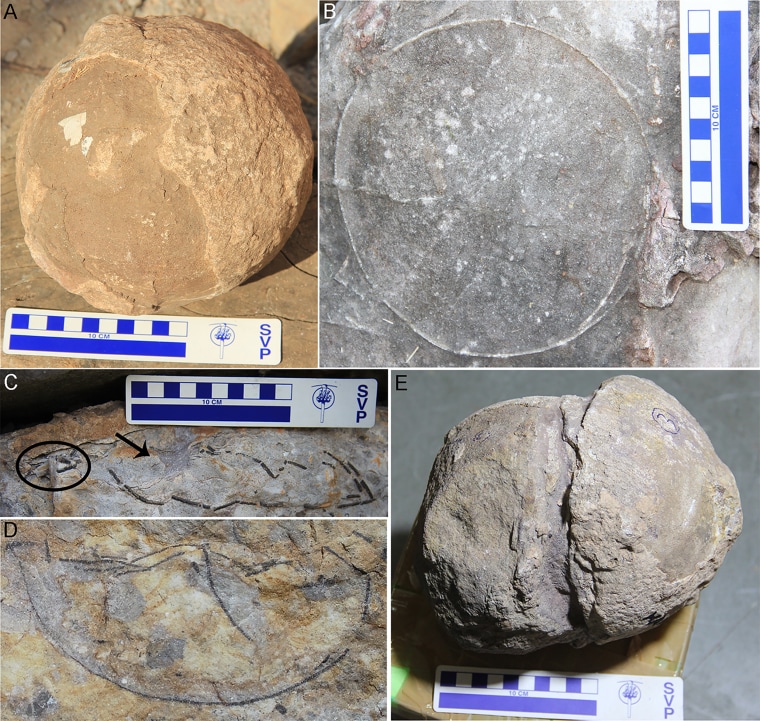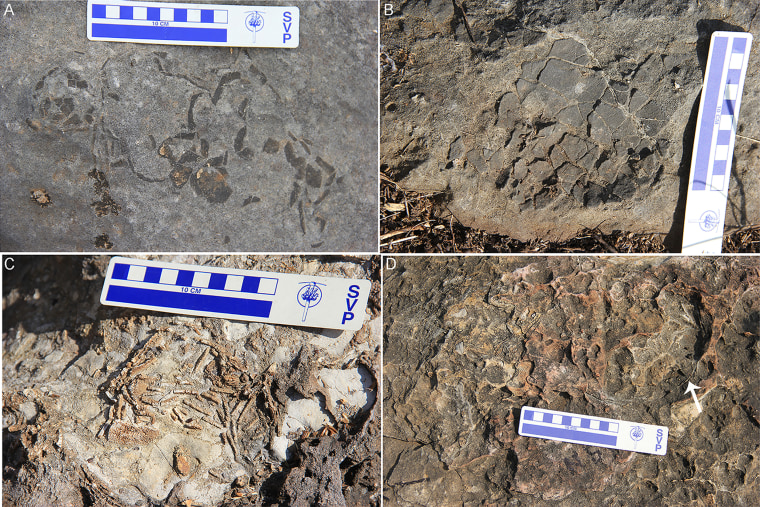
More than 250 eggs of one of the largest dinosaurs ever to walk the Earth have been found in 92 hatcheries in central India, according to a team of paleontologists that made the discovery.
The find reveals intimate details about the lives of titanosaurs, which were about 23 to 85 feet long depending on the species, the researchers from the University of Delhi said in a study published in the PLOS ONE journal last week.

“Our research has revealed the presence of an extensive hatchery of titanosaur sauropod dinosaurs in the study area and offers new insights into the conditions of nest preservation and reproductive strategies of titanosaur sauropod dinosaurs just before they went extinct,” Harsha Dhiman, the study’s lead author, said in a news release.
Paleontologists have been able to identify six different types of eggs from the 256 they found during excavations between 2017 and 2020, the study said.
This suggests significant diversity in the species which lived from the late Jurassic Epoch, around 163.5 million to 145 million years ago, until the end of the Cretaceous Period, roughly 145 million to 66 million years ago, the study added.

“Eggs and eggshells are considered as trace fossils, and their discovery can be examined as indirect evidence of the existence of life,” Guntupalli V.R. Prasad, a co-author of the study, told NBC News on Friday.

Found in the Lameta formation, a sedimentary geological formation in central India known for fossil discoveries, Prasad said, the egg species “may represent intraspecific variation,” which could suggest a higher diversity of titanosaurs than those represented by skeletal remains found in the region.
Multi-shelled and ovum-in-ovo, or “egg-in-egg” pathologies have been identified at this site, indicating “that the creatures had a reproductive physiology similar to birds and possibly laid their eggs in a similar manner,” the study said.

However, it added that the clutch pattern “which shows eggs randomly spaced with similar matrix content inside and outside the eggs, indicates their nesting pattern to be more similar to crocodiles.”

The team also suggested that the titanosaurs buried their eggs in shallow pits like crocodiles and they were incubated using solar radiation and geothermal heat.
“The presence of many nests in the same area suggests these dinosaurs exhibited colonial nesting behavior like many modern birds,” the study added. “But the close spacing of the nests left little room for adult dinosaurs, supporting the idea that adults left the hatchlings (newborns) to fend for themselves.”